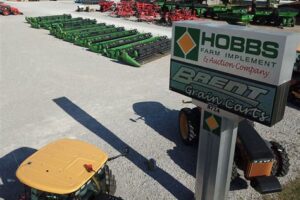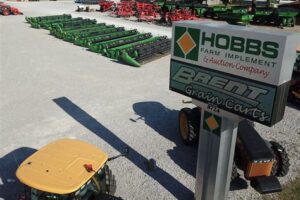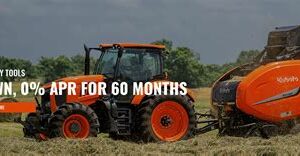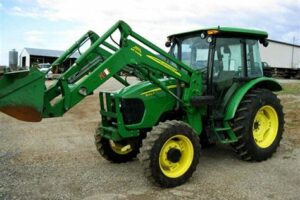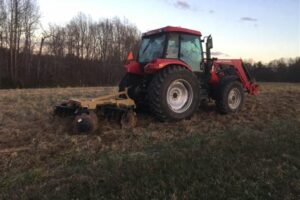Table of Contents
Looking for a comprehensive list of farming equipment names? Look no further! Our guide features an extensive collection of essential tools and machinery for all your farming needs. From tractors and plows to harvesters and sprayers, explore the world of farming equipment and elevate your agricultural operations.
When it comes to farming, having the right equipment is crucial for success. From tractors and plows to harvesters and sprayers, there are numerous tools that farmers rely on to efficiently cultivate their land. Whether you’re a seasoned farmer or just starting out in the agriculture industry, understanding the different types of farming equipment and their names is essential. In this article, we will explore some of the most commonly used farming equipment names, providing you with the knowledge you need to navigate the vast world of agricultural machinery.
Introduction
Farming equipment plays a critical role in modern agriculture, enabling farmers to efficiently cultivate and harvest their crops. From tractors to plows and seed drills, these tools have revolutionized the way we farm. Understanding the different types of farming equipment is essential for anyone involved in the agricultural industry. In this article, we will explore some of the most commonly used farming equipment names and their functions.
Tractors
Tractors are versatile machines that are the backbone of any farm. They are used for various tasks, such as plowing, tilling, planting, and hauling. Tractors come in different sizes and horsepower ratings, allowing farmers to choose the right one based on their specific needs. Modern tractors often include advanced features like GPS guidance systems and automated controls, making them more efficient and precise.
Plows
Plows are farming tools used for breaking up and turning over soil, preparing it for planting. They come in different designs, including moldboard, disk, and chisel plows. Moldboard plows are commonly used for traditional plowing, while disk and chisel plows are more suitable for heavy and compacted soils. Plows are typically attached to tractors and are available in various sizes to match different field conditions.
Seed Drills
Seed drills are essential for efficiently planting seeds in the soil. They create furrows, deposit seeds at the correct depth, and cover them with soil. Seed drills ensure uniform seed placement, which promotes even germination and optimal crop growth. Some advanced seed drills can also apply fertilizer or other treatments while sowing, saving time and improving productivity.
Harvesters
Harvesters are machines designed to efficiently harvest crops. They come in different types, including combine harvesters for grains, potato harvesters, and cotton pickers. Combine harvesters, also known as combines, are particularly versatile and can perform multiple tasks, such as cutting, threshing, and cleaning crops in a single pass. These machines significantly reduce the labor required for harvesting and improve productivity.
Balers
Balers are used to compress and bundle crops, such as hay or straw, into compact packages called bales. These bales are easier to handle, transport, and store. Balers come in different types, including round balers and square balers. Round balers produce cylindrical bales, while square balers create rectangular-shaped bales. The choice of baler depends on the specific crop and the desired bale size.
Sprayers
Sprayers are essential for applying pesticides, herbicides, and fertilizers to crops. They ensure precise and uniform coverage, helping to control pests and diseases while maximizing crop yields. Sprayers can be mounted on tractors or operated as self-propelled units. Some advanced sprayers are equipped with GPS technology, which enables accurate application rates based on field mapping and the crop’s specific needs.
Spreaders
Spreaders are used for distributing granular fertilizers, seeds, or other materials over a large area. They come in various forms, including broadcast spreaders and drop spreaders. Broadcast spreaders distribute the material in a wide pattern, while drop spreaders deposit it in a controlled path. Spreaders are commonly attached to tractors or operated as standalone machines, depending on their size and capacity.
Irrigation Systems
Irrigation systems are vital for providing water to crops, especially in areas with limited rainfall. Different types of irrigation systems are used, such as sprinkler systems and drip irrigation. Sprinkler systems spray water over the fields, mimicking rainfall, while drip irrigation delivers water directly to the plant roots, reducing water wastage. These systems help farmers maintain optimal soil moisture levels and ensure adequate crop hydration.
Hay Rakes
Hay rakes are farming tools used for collecting and arranging cut hay into windrows or rows. They facilitate the drying process by exposing the hay to sunlight and air. Hay rakes come in various designs, including wheel rakes and rotary rakes. Wheel rakes use rotating wheels with tines to gather the hay, while rotary rakes use spinning arms to collect and form neat windrows. These tools are essential for efficient haymaking.
Conclusion
Farming equipment plays a crucial role in modern agriculture, enabling farmers to optimize their productivity and achieve higher crop yields. From tractors and plows to harvesters and sprayers, each piece of equipment serves a specific purpose and contributes to the overall success of a farm. By understanding the different types of farming equipment and their functions, farmers can make informed decisions about which tools are best suited for their specific needs, ensuring efficient and sustainable farming practices.
Tractors
Tractors are powerful farming equipment used for various tasks such as plowing, planting, and harvesting crops. They come in different sizes and models, ranging from small utility tractors to large, high-horsepower machines suitable for heavy-duty applications. Tractors play a crucial role in mechanizing farm operations, making them indispensable for modern agriculture.
Harvesting Equipment
Harvesting equipment includes a wide range of tools and machines used to gather mature crops efficiently. These may include combine harvesters, which cut and collect grains, as well as specialized equipment for harvesting fruits and vegetables. These machines not only streamline the harvesting process but also help minimize labor requirements and maximize productivity.
Irrigation Systems
Irrigation systems are essential for providing water to crops in areas with inadequate rainfall or during dry seasons. They include various equipment and techniques such as sprinklers, drip irrigation, and center pivots that distribute water evenly across fields. Irrigation systems help maintain optimal moisture levels, ensuring healthy plant growth and maximizing yield potential.
Planters and Seeders
Planters and seeders are farming equipment designed to sow seeds and plant crops efficiently. These machines help farmers achieve accurate seed spacing, depth, and coverage, ensuring optimal germination rates and uniform plant growth. Planters and seeders come in different types, such as the precision air seeder, which can handle high volumes of seeds while maintaining precision.
Tillage Equipment
Tillage equipment is used to prepare the soil for planting by breaking up compacted soil, removing weeds, and incorporating organic matter. Implements such as plows, disc harrows, and cultivators help loosen the soil and create a good seed bed, improving seed-to-soil contact and nutrient availability for the crops. Tillage equipment varies in design and size, allowing farmers to choose the most suitable tool for their specific needs.
Sprayers
Sprayers are used to apply fertilizers, pesticides, and herbicides to crops, promoting their healthy growth and preventing weed and pest infestations. These machines come in various types, such as air-assisted sprayers, backpack sprayers, and boom sprayers, offering versatility in terms of application techniques and targeted areas. Sprayers are vital for ensuring crop protection and maintaining high-quality harvests.
Balers
Balers are machines used to compress and bind agricultural materials such as hay, straw, or silage into compact and manageable bales. These bales are easy to transport and store, making them convenient for feeding livestock or selling as forage. Balers can be round or square, and their capacity and design depend on the type of material being baled.
Livestock Equipment
Livestock equipment refers to tools and machinery used in animal husbandry, such as feeding equipment, watering systems, and housing structures. These include feeders, water troughs, milking machines, and shelters designed to ensure the well-being and productivity of farm animals. Livestock equipment plays a crucial role in efficient animal management and maintaining optimal health conditions.
When it comes to the world of farming, having the right equipment can make all the difference. Farmers rely heavily on their tools and machinery to efficiently manage their crops and livestock. That’s why having proper names for farming equipment is crucial. It not only helps in effective communication among farmers but also reflects a professional approach towards agriculture.
Here are some points highlighting the importance of using professional names for farming equipment:
- Clarity and Precision: Using specific names for farming equipment ensures clarity in communication. When farmers refer to a piece of machinery by its professional name, there is no room for confusion or misunderstanding. Whether it is a tractor, plow, harvester, or sprayer, using precise terminology allows farmers to discuss, troubleshoot, or seek advice more accurately.
- Efficiency and Productivity: Professional names for farming equipment contribute to increased efficiency and productivity. Clear communication helps farmers quickly identify and select the appropriate tool for a specific task. This saves time and minimizes errors, allowing for better utilization of resources and improved overall productivity.
- Standardization: Having standardized names for farming equipment promotes consistency and uniformity within the agricultural community. When everyone refers to a particular machine by its professional name, it sets a standard that can be easily understood and followed by all. This facilitates equipment exchange, training, and the sharing of best practices among farmers.
- Safety and Training: Using professional names for farming equipment is crucial for safety purposes. When operators and workers are familiar with the correct terminology, it leads to better understanding of operating instructions, safety guidelines, and maintenance procedures. It also simplifies training processes, ensuring that individuals can effectively and safely operate the machinery.
- Industry Reputation: The use of professional names for farming equipment contributes to the overall reputation of the agricultural industry. It reflects a level of professionalism, expertise, and commitment towards modern farming practices. It also enhances the image of farmers as skilled individuals who are knowledgeable about their trade, further strengthening the perception of agriculture as a respectable profession.
In conclusion, using professional names for farming equipment is vital for effective communication, increased efficiency, and improved safety in the agricultural sector. It not only enhances productivity but also contributes to the overall reputation of the industry. Therefore, it is imperative for farmers to adopt and promote the use of proper terminology when referring to their equipment.
Thank you for visiting our blog and taking the time to learn about farming equipment names. We hope that this article has provided you with valuable insights into the various tools and machinery used in modern farming practices. As you may have noticed, the world of farming equipment is vast and diverse, with each tool serving a specific purpose to streamline agricultural operations. It is essential to understand the names and functions of these tools to make informed decisions when it comes to purchasing or operating them.
Throughout this article, we have discussed some of the most commonly used farming equipment names, ranging from basic hand tools to advanced machinery. We have highlighted the importance of each tool and explained how they contribute to different aspects of farming, such as soil preparation, planting, cultivation, and harvesting. By familiarizing yourself with these names, you will be better equipped to communicate with fellow farmers, suppliers, or agricultural experts, enabling you to navigate the industry more effectively.
It is worth mentioning that this article only scratches the surface of farming equipment names, as there are countless specialized tools and machinery designed for specific crops, terrains, and farming methods. As technology continues to advance, new innovations in farming equipment are constantly emerging. Therefore, we encourage you to stay curious and continue exploring the world of farming equipment beyond what we have covered here.
In conclusion, we hope that this article has broadened your knowledge of farming equipment names and their significance in modern agriculture. Whether you are a seasoned farmer or someone interested in learning more about this field, understanding the tools and machinery used in farming is crucial. By familiarizing yourself with these names and their functions, you will not only enhance your communication within the farming community but also gain a deeper appreciation for the hard work and innovation that goes into sustaining our food production systems. Thank you once again for visiting our blog, and we look forward to sharing more valuable insights with you in the future.
Video Farming Equipment Names
When it comes to farming equipment, there are various tools and machinery that farmers use to facilitate their agricultural activities. Here are some commonly asked questions about farming equipment names:
-
What are some basic farming equipment names?
Some basic farming equipment names include:
- Tractor
- Plow
- Harvester
- Cultivator
- Seeder
-
What are the different types of tractors used in farming?
There are several types of tractors used in farming, such as:
- Utility tractors
- Row crop tractors
- Orchard tractors
- Garden tractors
- Industrial tractors
-
What is a combine harvester?
A combine harvester, often referred to simply as a combine, is a versatile machine used for harvesting various crops. It combines several functions into one, including cutting, threshing, and cleaning the harvested crops.
-
What is a plow used for in agriculture?
A plow, also known as a plough, is an agricultural tool used for turning over soil and preparing it for planting. It helps break up the soil, remove weeds, and create furrows for planting seeds or seedlings.
-
What is the purpose of a cultivator in farming?
A cultivator is a farm implement used for secondary tillage operations. It helps loosen the soil, remove weeds, and aerate the ground around growing plants. Cultivators are commonly used in row-crop farming.
These are just a few examples of farming equipment names and their purposes. The specific equipment used may vary depending on the type of farming, crop varieties, and the size of the operation.

